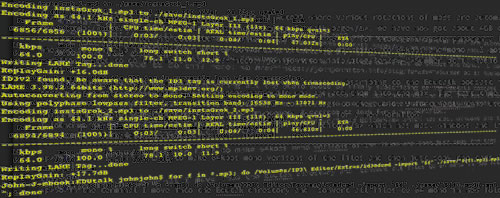
It has been five short years since I left the classroom and much to my surprise I am going to be moving on, for a secondment. Recently I was approached to take a role in the development of glow. The role is one of three product owners, I am not sure exactly what I’ll be doing but it involves working with the team at Scottish Government to develop the ICT in excellence recommendations.
Exciting stuff, as I understand it I’ll be working with a team of developers as a ‘product owner’, this is a completely new direction for me. I’ve read a description or two of what the being a product owner entails and it seems somewhat daunting. I am hoping that my enthusiasm for ICT and online learning will carry me through. I’ll also be relaying on Ian Stuart, a member of the ICT in excellence group and one of the other product owners to get me up to speed. (Ian tweeted as Islayian until now, this post requires relocation and a new twitter name: @IanStuart66)
I was interested to read a few tweets in response to Fearghal Kelly’s tweet about the advert for the job for the third product owner. Fearghal had been asked to do this, but a replacement biology teacher could not be found. Fearghal’s tweet surfaces a wee bit of less than positive feeling towards glow from others in Scottish education.
Today Fearghal came back with a solid response on this blog, Glowing Forwards explaining that it the potential not the reality of glow that is exciting.
Personally in private and public, I’ve spent a fair bit of time musing on and criticising glow. A lot of my work in the past five years has been in supporting the use of glow, and I’ve heard a lot of folk talking about the problems. From the start I’ve believed that the concept of a national space and set of services/connections is a good thing but have sometime been disappointed with that is provided. I’ve posted a lot here, varying from beta test reports, through moans to weird hacks to get glow to behave as I think it should. I am not starry eyed about glow but I do think it is needed.
One reason is the uneven access to online tools across Scotland. Some authorities are risk adverse, some are neophiles. There have been some attempts to change this politically for longer than glow has existed they do not seem to have move the goalposts much. Perhaps a new glow could help. To do so it would need to provide a good set of standard tools, the sort that are used for all kinds of things across the internet. I am not talking here about VLEs or LMS, but blogs, wikis and other malleable systems.
A few years ago when I started using some Web 2.0 tech with my pupils I was breaking new ground, at least locally. Luckily for me I was too naïf to ask permission, it would probably not have given. I was also excited and pig headed enough to keep banging away at getting the technology to work. Not everyone likes to spend there time this way and nor should they.
I think there should be two ways to use glow: 1. pick it up and run, 2. Hack and modify. The first would be the general way to use it ,the second would have space for innovation. I do not mean hack in just the realm of software or code but more generally. A way to take a tool and use it in a completely or slightly new way. Teachers constantly do this across the curriculum and across age and stage. They take lessons, topics, ideas and make them suit their class, pupils and situation, it should be possible to do this with online tools.
I also think that Sharepoint, behind the original glow portal and being developed by Education Scotland as a major part of the new glow is not the best way to go about this Eduhacking. I might be wrong about this and look forward to finding out more of how it will fit in the new service. I hope it is just one of a range of tools. To me, Sharepoint looks like a powerful toolkit for centrally designing online spaces. To exploited it best it needs professionals. These professionals can design tools and spaces for teachers and learners based on what is understood about the teaching and learning process. But it does not feel friendly to the casual user who wants to bend it to a particular task. It does not feel like a space where the users will innovate.
I’ve blogged about this recently, Glow should be at the trailing edge.
We need other technologies too, VLEs, mail perhaps video hosting, these are often available at a price or free online already, but I’ve watched quite a few services come and go over the last few years and we need to keep in mind that the developers of these services need to make money somehow:
If you had asked me a couple of years ago about an interesting blogging tool that might be a great fit for the classroom I would have pointed you towards posterous. This was a service that was always going to be free, until twitter bought it and it closed down. Personally I was left with nearly 1000 posts on edutalk to try and sort out into a new system. (The provided tools didn’t work very well with audio!). The point is that teachers comfortable with online spaces would roll with it and find new tools if say Edmodo disappears but a lot of others will become frustrated and disenchanted. Hopefully the new glow will provide a bit of stability if not all of the polish and gloss of brand new and shiny tools.
There is a lot of work to do, glow has suffered from a barrage of criticism and slow response its critics. The transition, and uncertainty around it have not helped much, but it does look like the government is going to push ahead with glow taking the ‘ICT in excellence’ groups advice and that sounds like an interesting place to work.







